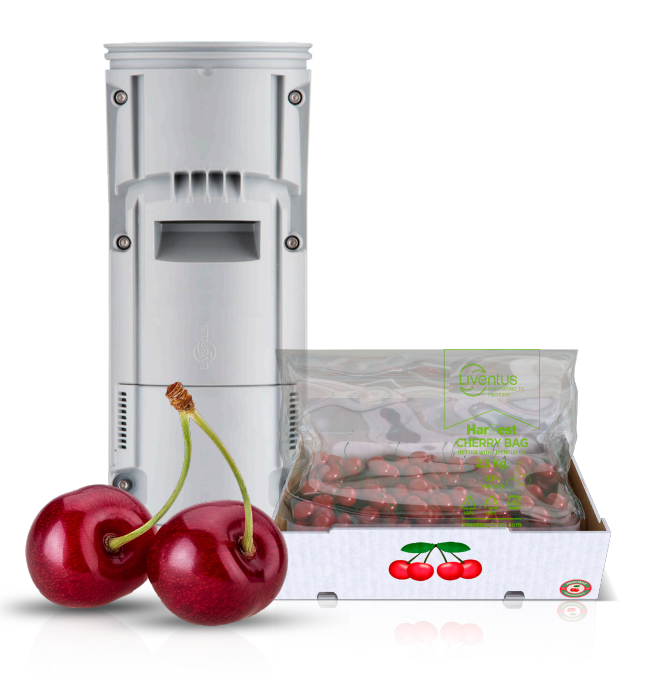How to stop internal browning in cherries during post-harvest
From Liventus
In Chinese culture, cherries are a commodity that symbolizes perfection, eternity, happiness, and prosperity. That is why they are eaten on Chinese New Year’s Eve and given away to relatives, colleagues and friends.
Cherry consumption in China at this time of the year increases so much that it manages to position the Chinese market as the No. 1 cherry importer in the world, with Chile being the main supplier and accounting for 91.1% of the cherry import market share.
Chile is the world leader in the production and export of cherries. Even if the last seasons were challenging, this season 22/23 had to cope with labor shortage, low capacity in packaging processes, virus control, longer transit times due to logistic problems, customs clearance and closed ports due to COVID-19 Scenario looks quite promising in terms of volume.
A volume increase of 20% is expected compared to last year, but the main concern is slightly different this season: reduction in business value caused by internal browning, which is mainly manifested in the Regina variety.

The next upcoming Chinese New Year is 10 days earlier than normal (January 22). The earlier fruit varieties: Brook, Royal Dawn, Santina and part of the Lapins are shipped by air freight and in the first sea shipments. This means that only about 40% of Chile’s production arrives in China in time for rapid commercialization and distribution, and is sold at prices as high as $20 per kg. But what about the remaining 60% that arrive after Chinese New Year?
This will be the most affected fruit and will consist primarily of the Regina variety and a fair share of Lapins. This season, the remaining fruits will have a much longer storage time as they will have to wait at least 10 days for the Chinese market to be reactivated and may face temperature disturbances upon arrival as the cold chain management is not the best. These variables compound the larger post-harvest problem: internal browning.
Internal browning is a condition that manifests itself 35 days after harvest mainly in the Regina variety, but also manifests in other varieties as part of the fruit aging process. This shortage is one of the main problems (if not the main problem) of cherry exporters in Chile.
Since it causes a negative change in the fruit, flattening its sweet taste and adding a metallic aftertaste, it directly affects the price. This was the reason for thousands of negative returns over the past season. But thanks to the research carried out by Liventus, this season we have new solutions that will be able to reduce the severity and intensity of internal tanning.
Liventus Full Control is a new concept that aims to transform the post-harvest industry. By combining Liventus’ Controlled Atmosphere (CA) and our perforated HarBest Caseliner bag, we get the best of both worlds: the correct and continuous control of carbon dioxide and oxygen and the high relative humidity that the HarBest bag offers.
By combining both technologies, we obtain excellent preservation and firmness of the green stems, reduced respiratory rate, high fungistatic control and, most importantly, inhibition of the enzyme polyphenol oxidase, reducing internal browning of the fruit.

There are additional operational and commercial benefits to using this solution. Liventus CA technology is ‘plug and play’, which means it can maintain a controlled atmosphere in any standard refrigerated container. It also uses an autonomous battery, so it continues to function and maintain an appropriate gas concentration even when the canister is disconnected from a power source.
In addition, every exporter using Liventus CA has access to “AgroAlma”, an online digital platform that helps to track what is happening in the container during transport. Finally, the greatest impact that Liventus Controlled Atmosphere has on commodities such as avocados, blueberries and stone fruit is seen when the fruit is commercialized as it helps exporters fetch better than average prices.
If the industry continues to do the same, the bottom line will not change. Given the losses of the last two years and the context in which we find ourselves today, we believe there is an urgent need for the industry to make the necessary changes to extend the shelf life of cherries after harvest and thus achieve excellent results.

